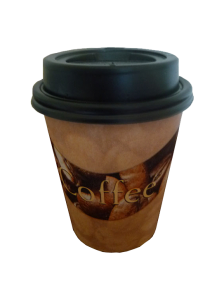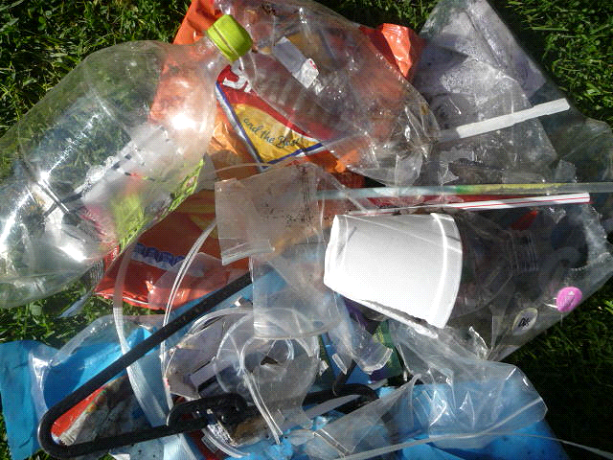The ARC of innovation for Brisbane River – Australia
Posted on August 18, 2021 by DrRossH in Plastic Waste News
Ocean Crusaders Foundation was founded by Ian Thomson with a vision of cleaning up Australia’s waterways to protect its precious marine wildlife and thus the Automatic River Cleaner (ARC) was born.
Ian spent three years dreaming of a device to help with this mission by removing more plastic and other debris with less effort. This July he stood proudly next to the first Automatic River Cleaner (ARC) installed in the Brisbane River, an innovative design that is poised to help protect wildlife and the delicate Moreton Bay ecosystem by intercepting rubbish before it floats into the bay.
The ARC uses both hydro and solar power to convey floating debris out of waterways and into a skip bin for collection.
The concept of deploying an automated approach to cleaning Australian waterways isn’t novel, but Ian’s vision was to develop a uniquely Australian approach that suited local waterways, albeit on a small budget.
Like many great stories, this plot has many characters, who have all played a role delivering the successful end result. Critical to the outcome has been RDT Engineering team, who led the charge to translate Ian’s dream into a practical, workable solution.
There was also a range of suppliers who jumped on board to help meet the deadline and either donate or supply equipment at cost, as well as other supporters who helped provide funding for the project (including Suez, IFM Investors, and the Port of Brisbane).
Ian’s introduction to RDT came by visiting some of the Return-It container refund points, where he realised the team’s experience with conveyors – and passionate specialisation in all things recycling – made them a great fit for the project. RDT designs custom conveyor systems and had previously developed floating units to remove pond weed.
RDT is a natural place for engineers who are passionate about the environment and the ARC was one of those ‘out of the box’ challenges the team jumped into for personal fulfilment, rather than commercial gain.
Engineering challenges
RDT designed the waterwheel, conveyor and supporting structure, which had to be mounted on a pontoon frame that Ocean Crusaders supplied.
Parts of the pontoons had been recovered from a previous river clean up, and Ian wanted them to be repurposed and reused as part of the project. RDT also designed the configuration of the drives including gears, pulley system, conveyor rollers and bearings, and engaged with metal fabricators to bring the project together.
The first key challenge was selecting a suitable conveyor belt and method due to the budget constraints and tough saline environment, while also keeping in mind the pontoon could only support up to two tonnes.
The conveyor had to be able to handle the full range of debris that might float down the river, including after heavy storms.
The wheel required a lot of research to determine the optimal dimensions, speed and torque to move the belt.
Although the waterwheel is quite an ancient piece of engineering, there is limited literature and conflicting data on designs.
In this case it had to function in a tidal environment with current flowing in both directions. As one engineer noted, “it’s a mixture of engineering and art”.
The wheel was designed to use a combination of the river’s free flow velocity, as well as being supplemented by gravitational head supplied by a solar powered pump.
Lots of calculations and reasonable assumptions later, an initial prototype was ready for testing in the real world.
Although the equipment was kept as light as possible, there was also anticipation of which way the pontoon would lean and how deep the conveyor would sit in the water that needed to be taken into account.
The RDT team evaluated different materials and configurations against criteria such as weight, durability in marine conditions, strength, simplicity, water flow through the belt, and similar situations. It ended up using a plastic modular belt supplied by Rydell Beltech, a standard off-the-shelf option that is light and allows water to flow through, which in turn ensures material can easily flow up onto the belt and out of the water.
The wheel itself was constructed out of aluminium, which helped reduce the weight and also balanced out the buoyancy required for stability.
Team results
While the ARC project could have been one of those nice “do something useful to keep your hand in” opportunities during quieter times, the reality was that the ARC needed to be delivered during a very busy period, right in between RDT completing Australia’s first ‘post China’ new MRF in Cairns, and completing another MRF in Southern Adelaide.
Despite being busy on major projects, RDT was keen to ensure the success of the ARC project.
The company saw it as an opportunity, particularly for some younger members of the team, to flex their creativity and deliver an innovative passion project that was personally rewarding.
Summing up the mood of the team, engineer Helen Dillion said, “getting back into the basic principles of physics and engineering again was so gratifying, and being able to mix environmental passion with a physical project that we can see having an impact in our backyard is really fulfilling”.
The engineering team were inspired by the endless work Ian and his supporters put into cleaning up waterways, and strongly motivated to apply their skills, experience and passion to help deliver better results with less reliance on volunteer time manually picking rubbish out of waterways.
“We were all really excited to work on this project and dedicated a few weekends in order to get it delivered in time,” said designer Luke.
“We are all very passionate about keeping our oceans clean and hope this leads to even more investment in similar projects; we look forward to seeing how it performs in the Brisbane River and hopefully seeing more of these units floating on rivers all around Australia and the rest of the world soon.”

 How many people today grab a takeaway coffee cup from the local cafe to drink on the go? We don’t know, but the number must be enormous.. Most every one of the above have a plastic top that will last 100s of years. Some cafes still use plastic cups that last a similar time. Is 10 minutes of coffee worth 100s of years of trash?
These items can be seen littering our gutters and on our streets all over the place. If they were all cardboard, they would still be littered, but they would, at least, be gone in a short time.
They do not need to be made of plastic.
How many people today grab a takeaway coffee cup from the local cafe to drink on the go? We don’t know, but the number must be enormous.. Most every one of the above have a plastic top that will last 100s of years. Some cafes still use plastic cups that last a similar time. Is 10 minutes of coffee worth 100s of years of trash?
These items can be seen littering our gutters and on our streets all over the place. If they were all cardboard, they would still be littered, but they would, at least, be gone in a short time.
They do not need to be made of plastic.
 On the way home from the gym last week, a distance of about 1 km (1/2 mile), I counted the items of plastic litter on the curb as I walked. In that short distance I counted 63 pieces of plastic litter. Plastic drink bottles, bottle tops, candy wrappers, plastic film, polystyrene fragments etc. That seemed to be a lot to me. I guess it is a generational thing. Our parents would have been horrified to see that amount, whereas it seems to go unnoticed by our youth of today. In another 20 years how many pieces will there be on this stretch, -- 200? What will today’s youth think of that new amount then when they are older? Will their children be so readily accepting of a higher amount of litter?
On the way home from the gym last week, a distance of about 1 km (1/2 mile), I counted the items of plastic litter on the curb as I walked. In that short distance I counted 63 pieces of plastic litter. Plastic drink bottles, bottle tops, candy wrappers, plastic film, polystyrene fragments etc. That seemed to be a lot to me. I guess it is a generational thing. Our parents would have been horrified to see that amount, whereas it seems to go unnoticed by our youth of today. In another 20 years how many pieces will there be on this stretch, -- 200? What will today’s youth think of that new amount then when they are older? Will their children be so readily accepting of a higher amount of litter?
Discussion · No Comments
There are no responses to "The ARC of innovation for Brisbane River – Australia". Comments are closed for this post.Oops! Sorry, comments are closed at this time. Please try again later.